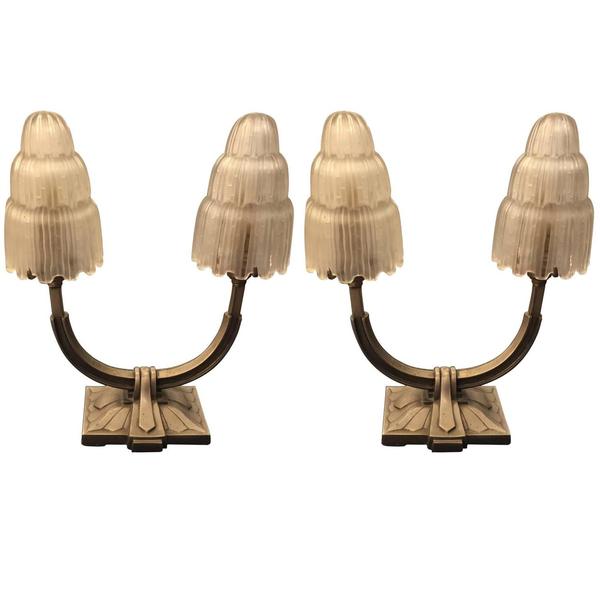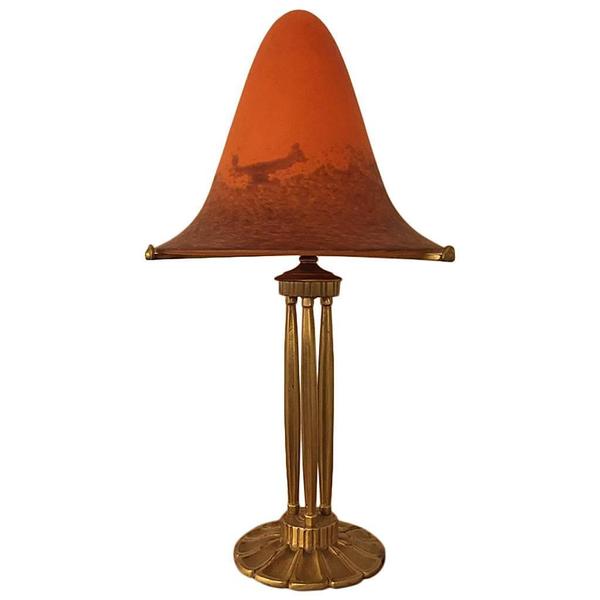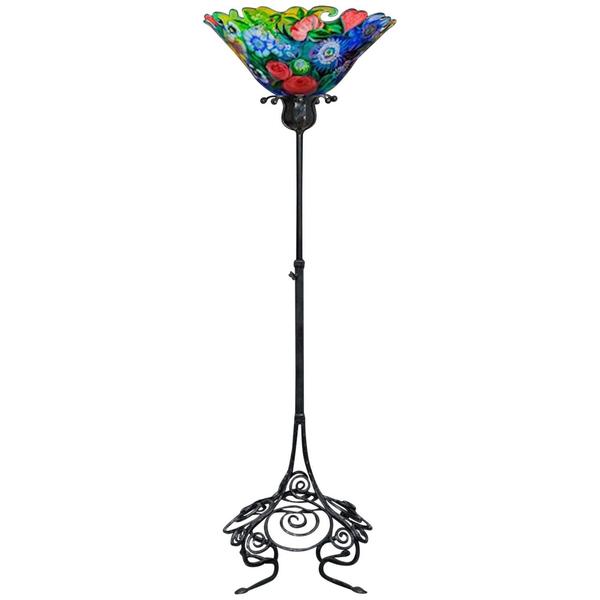4 Tips to Caring for Your Chandelier 0
Taking care of a chandelier can be a tricky job, especially if it's an original and not a replica or knock-off. To keep your chandelier (or chandeliers) in beautiful and great condition, here are 4 tips to follow.
1. Weekly dusting
Chandeliers are notorious dust-traps, attracting dust and insects all the time. They can quickly get dull and the light can become dimmer over time as a result.
Don't just wave a duster at it though, as the dust will simply fly into the air and resettle on your chandelier. Use a soft cloth or a static-free duster every week to remove excess dust, and don't be afraid to get on a ladder and get up close and personal.
Whatever you do, just be careful and, if you are using a ladder, make sure it's secure and there's someone nearby to help stabilize you.
2. Monthly inspections
The older a piece is, the more susceptible it is to rust, temperature fluctuations and other potential damage. It's a good idea to inspect the chandelier once a month, or at least once every two months.
Check any glass, crystal or perspex pieces for chips and cracks. Take a look at (but please don't touch!) the wiring to make sure nothing has become frayed or exposed.
Also look at any metal part, including chains, hooks or links, to make sure they aren't bent, broken or rusted.
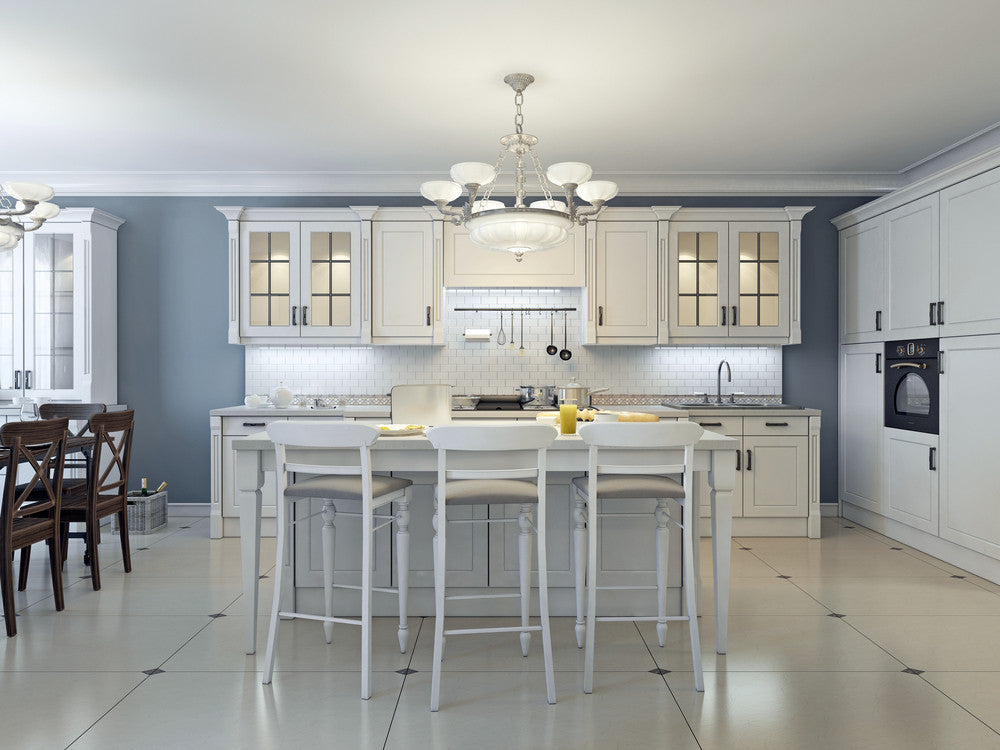
3. Seasonal deep cleaning
This is something that should be done seasonally, or at a minimum every six months.
The more intricate the chandelier and the more pieces it has, the less often you may want to do it to avoid accidentally breaking parts.
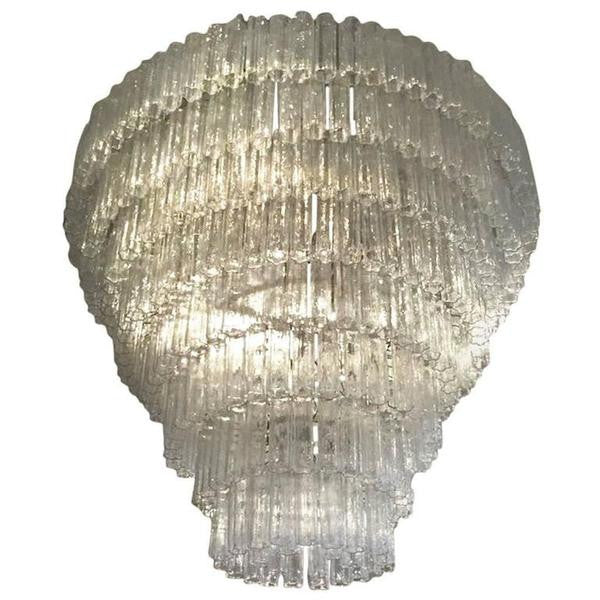
Italian Mid Century Round Eight Tired Tronchi Chandelier
If your chandelier includes many glass, crystal or perspex parts, you'll want to carefully wash those in warm, soapy water every three to six months.
The timing can also depend on where in the house the chandelier is - for example, those in the kitchen will build up humidity and grease a lot more quickly that those in the bedroom.
Take your time dismantling and washing the pieces, then reassemble it when everything is completely dry. If the ceramic or other hardware parts are fragile, very delicate or have any age damage, you'll want to do this process less often.
4 - Call a professional
While it's admirable to take personal care of your Art Deco or Mid-Century Modern chandelier, there's absolutely no reason not to use a professional for the cleaning.
We're quite confident anyone should be able to manage the dusting, but maintenance and deep cleaning can present challenges for non-experts.
French Art Deco Brass and Nickel Chandelier
Get to know the materials your chandelier is made out of and learn what cleaning products are best suited to their care.
Remember that vintage and antique pieces will be made from different materials, or that the materials will have undergone different processes to modern pieces, and this can affect their cleaning and maintenance needs.
If you have any doubt at all, go ahead and call in a professional. The store where you bought your genuine Art Deco or Mid-Century Modern chandelier should have a list of providers they trust to take care of their pieces, and will happily recommend them to you.
Keep Your Lights Shining Bright 0
A 1-2-3 guide to cleaning and caring for Art Deco chandeliers, light fittings and lamps
Bronze
So you've finally chosen and installed your Art Deco lighting. You're surrounded by the soft, gentle glow of sconces, ceiling lights and table lamps that reflect your love for this fantastic decor art form.
But, like everything else, they will get dusty and dirty over time and cleaning them may take a little more care than ordinary light fittings. This step-by-step guide will help you take care of your lights and keep them shining.
Step 1: Know your materials
Glass and Silvered Bronze
Art Deco as a design form drew its influences from all over the world and, as a result, its materials came from every conceivable available source - glass, metal, wood, bone, ceramics and fabric could all quite happily coexist in one piece.
One thing you won't find a lot of in genuine Art Deco is plastic, as most polymers only came into use after World War II, but you may find one or two pieces made of Bakelite.
When buying cleaning products to use on your Art Deco pieces, make sure you are buying the appropriate products - pewter cleaner is no good for wood, while wood polish could wreck your beautiful hand-painted glass shade.
If in doubt, ask the seller or an antiques expert to help you identify the various materials.
Step 2: Careful cleaning
Glass and Copper
The easiest way to keep your lights clean is to dust them regularly. Using a soft cloth, wipe them down gently. Don't use a duster, because all the dust will just fly into the air to settle back on the fittings minutes later.
Even with regular dusting, you will still need to occasionally give your pieces a thorough cleaning. Once every six months to once a year should do it, unless you live in a particularly dusty or smoggy area.
Before washing any part of your lamp, such as the glass, crystal or ceramic parts, check it thoroughly for cracks, chips or other damage - especially in the glaze on ceramics. It is very difficult to get such cracks properly dry and this could cause all kinds of further damage.
Make sure you spend some time gently cleaning all the corners, crevices and nooks where grime can accumulate. Use soft cloths, q-tips or very soft-bristled brushes.
Double-check whether wooden parts are varnished or raw. They may need oil rather than polish. If you use oil, stick with oil; if you use wax, stick with wax. Don't switch between the two, as this can cause cloudiness and build-ups.
Step 3: Don't DIY
Painted Glass and Hand-Forged Iron
When the time comes to take down your enormous crystal and pewter chandelier to individually clean all 500 pieces, or when your hand-painted one-of-a-kind sconces are looking a bit dull and you want to give them a wash, don't.
The same goes for those ceramic pieces with the cracked glaze we talked about earlier, or the carved bone filigree piece with thousands of pin-prick holes.
When it comes to the more specialized pieces, if you have even an ounce of doubt, it's better to leave it to the professionals. Genuine Art Deco pieces are usually quite pricey and unique, so it's worthwhile knowing one or two expert cleaning services to help you.
Make sure they really know the style and don't be afraid to ask them for references - and to contact the references! And also feel free to ask them about maintenance between the annual big clean. They will offer the best and most accurate advice.
- Matthew Pillet
- Tags: art deco ceiling light chandelier cleaning french art deco interior design lamp lighting painted glass sconce stained glass


